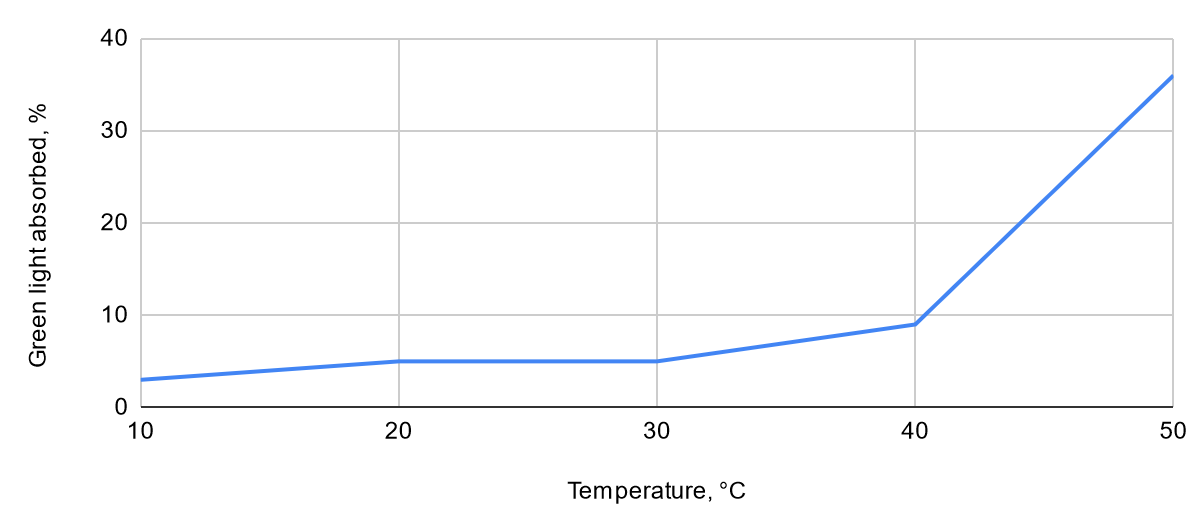Introduction
The goal of an experiment is to observe its process and results for further analysis. In biology, this type of evidence is vital for knowledge generation, and researchers must understand how to obtain and use it. The data acquired from a practical must be documented in a clear and concise way to stay applicable for evaluation. This test demonstrates the principles of gathering data from an experiment on the example of the effects of water temperature on a beetroot cell membrane. The null hypothesis is that no effect will be produced, and the substance will remain at 0% green light absorbance. The alternate hypothesis is that the substance will allow less green color to pass through it as the temperature rises and more anthocyanin is released.
Background Information
The effect of a growing temperature of the environment on a cell can be observed via a membrane permeability test on a beetroot. Proteins of a cell membrane are getting denatured, leading to rapid degradation of a membrane (Biology Practicals and Revision Biology Tutor, 2016). The total disintegration of a beetroot cell membrane occurs at the temperature of 70°C, at which point the amount of anthocyanin, which gives the beetroot its color, reaches the equilibrium of concentration (Biology Practicals and Revision Biology Tutor, 2016). This way of measuring dependent variables can prove useful in other experiments.
Independent variable
The percentage of green light absorbed by distilled water, which is 0%.
Dependent variable
The percentage of green light absorbed by the substance.
Methodology
Five same-size samples of a fresh cylindrical piece of beetroot have been extracted using a cork borer. They have been placed in five containers filled with distilled water, each pre-heated to a different temperature (10, 20, 30, 40, and 50°C). The pieces of beetroot have been extracted and the resulting substance was used to measure the amount of colored compound in a resulting substance The colorimeter was used to send green light through each sample. The device has shown that the percentage of green light passing through the substance differed depending on a temperature, which allowed the measurement of the percentage of released anthocyanin.
Requirements
- five equal samples of beetroot tissue;
- five containers filled with distilled water;
- heating device;
- thermometer;
- colorimeter;
- cork borer;
- ruler.
Table 1. The effect of water temperature on the percentage of green light absorbed by the substance

Observation
A cell membrane preserves most of its contents in temperatures under 30°C with a small release of anthocyanin due to kinetic energy from heated molecules of water, which is an average membrane permeability. However, the decrease of green light transmittance that is linked with the release of anthocyanin changes alongside the decreasing integrity of a cell membrane. Cells release more anthocyanin as the temperature of the environment increases. The drastic increase in the amount of anthocyanin released occurs at approximately 50°C.
Conclusion
In conclusion, this experiment demonstrates the role and helps to explain the structure of cell membranes. The connection between membrane permeability and temperature of the environment shows the mechanism of molecule transportation between cells. The initial decrease of light transmittance is linked with kinetic energy from heated molecules of water interacting with a cell. The drastic increase of anthocyanin is related to the degradation and eventual dissipation of a cell membrane of beetroot.
Reference
Biology Practicals and Revision Biology Tutor. (2016). Membrane permeability beetroot practical [Video]. YouTube.